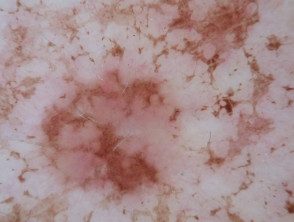What is intense pulsed light therapy?
Intense Pulsed Light (IPL) or flash lamp therapy are notinvader and non-ablative treatment that uses high-intensity pulses of visible light to improve the appearance of the following skin concerns:
- Vascular injuries including spider telangiectasia, port-wine stains, broken facial veins, rosy cheeks, rosacea, and red thread veins of the legs
- Freckles and age marks
- Facial lines and wrinkles
- Elimination of unwanted darkness hair
The procedure to rejuvenate aging skin is called photorejuvenation and requires a series of IPL treatments.
IPL can also be helpful for mild to moderate acne and stretch marks.
How does intense pulsed light therapy work?
IPL systems work on the same principles as lasers, in that light energy is absorbed into particular target cells with color (chromophores) on the skin. Light energy is converted into heat energy, causing damage to the specific target area. IPL systems are different from lasers in that they deliver many wavelengths (or colors) in each pulse of light instead of just one wavelength. Most IPL systems use filters to refine the energy output for the treatment of certain areas. This improves penetration without using excessive energy levels and allows for the targeting of specific chromophores (these are light-absorbing components of the skin).
IPL therapy is considered a non-ablative resurfacing technique, meaning it targets the lower layers of the skin (dermis) without affecting the upper layers of the skin (epidermis) The results are not as dramatic as ablative rejuvenation where both the dermis and epidermis are injured to produce a much more noticeable overall result. The advantage of IPL therapy is its minimal downtime: a patient can often have the procedure done on their lunch break and return to work immediately afterwards.
What intense pulsed light machines are available and what do they do?
There is a range of IPL machines including LumenisI® Quantum IPL® (the successor to PhotoDerm®), EpiLight® and Ellipse®. Individual machines may be specially designed to target certain problems, but they may not be equally effective.
| Vascular lesions |
|
| Pigmented injuries |
|
| Hair removal |
|
IPL effect on a freckle

Close up

Dermoscopy
What does the intense pulsed light procedure involve?
Before the procedure, your specialist professional should explain the process and clearly define your expectations about the treatment. They should be able to tell you if the results you are looking for can be achieved using this method. It is important that your doctor has made the correct diagnosis before treatment.
IPL treatments are normally straightforward. Make sure the technician has received proper training and is experienced in IPL therapy.
- Avoid sun exposure in the days and weeks before and after treatment.
- A current anesthetic It can be applied to the area but is generally not necessary.
- A cold gel applied to the area to be treated. IPL devices often have built-in cooling systems.
- The smooth, glass surface of the IPL treatment head is applied to the skin, delivering precise pulses of light to the area to be treated.
- Treatment sessions usually last about 20 minutes. A course of 4-6 sessions every 3-6 weeks may be necessary to achieve the desired results.
- Most patients can return to work immediately after treatment.
Throughout the treatment session, the patient must wear protective glasses. IPL treatments are relatively painless compared to other facial rejuvenation techniques. The sensation has been compared to a slight pinch or snap of a rubber band, but some people find it distressing.
Are there any side effects of intense pulsed light therapy?
IPL side effects are minor and include:
- Pain during treatment (reduced by contact cooling and, if necessary, topical anesthetic)
- The skin becomes pink and slightly sore immediately after the procedure.
- Sensation of a mild sunburn (redness, peeling, swelling) that may last a few days after treatment.
- In rare cases, the pigment in the skin can absorb too much light energy and blistering can occur.
- Sometimes pigment cells (melanocytes) can be damaged leaving darker or paler patches of skin. White spots or scars are rarely permanent.
- Hair fall can occur.
- Bruises affect up to 10% of patients.
Prolonged hypopigmentation due to IPL

Intense pulsed light

Intense pulsed light

